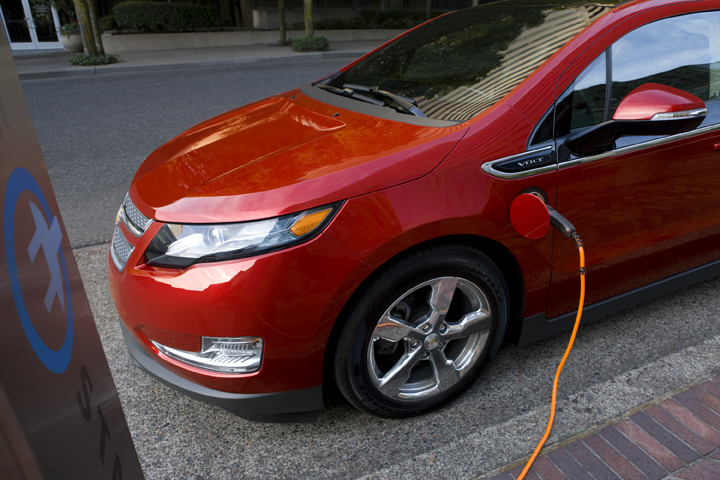Despite media attempts to conjure a "sales battle" between the 2011 Chevy Volt and the 2011 Nissan Leaf, both companies are selling every car they can manage to get into the showrooms.
Now Chevrolet has released its first look at who is actually buying its Volt range-extended electric cars.
The $41,000 four-seat compact hatchback plug-in hybrid is a very new type of car for General Motors, but it's largely succeeded thus far at drawing new customers to the middle-American Chevy brand.
Some data points:
Conquests: Every automaker hungers for "conquest buyers," those who are new to the chosen brand and trade in some other make. The Volt had to appeal to buyers, especially on the coasts, who didn't even know where their local Chevrolet dealer was--because they'd never before considered buying a Chevy.

2011 Chevrolet Volt Production Line
And it did. Chevrolet says almost 90 percent of the cars traded in on Volts were non-GM vehicles, including several different luxury brands, and 33 percent of them were hybrids. (We do wonder how many Volts were bought sans trade-in, however.)
Best of all, one-third of the Volt buyers said they had never in their lives set foot in a Chevy dealership before.
Dedication: According to the data, more than one-third of Volt buyers (35 percent) considered no other car. They had to have a Volt. That's very exciting news for the Chevy marketing team.
Grid power: Because GM can download extensive data on Volt operation through the car's Onstar link, the company knows a great deal about how Volts are used in the real world.

2011 Chevrolet Volt
Exactly two-thirds of all Volt miles thus far have been covered on power from the electric grid, rather than electricity generated by the car's 1.4-liter range extending gasoline engine.
That essentially maps to the finding that more than 70 percent of all American cars travel less than 40 miles per day, meaning that many Volts can cover their daily mileage entirely on a recharged battery pack, never needing to switch on their engine.
Infrequent fill-ups: The average Volt drivers covers more than 1,000 miles before having to fill the gasoline tank.

2011 Chevrolet Volt drive test, March 2011
That works out to more than 100 miles per gallon, a figure that should excite ... well, pretty much anyone who's complained about gas prices or ached for better gas mileage.
Satisfaction: According to GM, 97 percent of early Volt buyers are either "very" or "completely" satisfied with their Volt.
The other 3 percent are merely "satisfied."
As Volt vehicle line director Tony Posawatz told us, "We have never seen numbers this high on any [GM] car."
Green buyers: Finally, almost a quarter (24 percent) of the earliest Volt buyers either have or plan to get photovoltaic solar power for their homes, letting them recharge on renewable energy.

2011 Nissan Leaf and 2011 Chevy Volt, with roof solar panels visible; photo by George Parrott
(Certainly that's the case for our author George Parrott, who wrote about his experiences owning both a Volt and a Leaf earlier this year.)
We're quite sure that number will fall dramatically as more Volts are sold, but it does indicate that Chevy has managed to persuade the earliest of adopters and the greenest of greens that the electric Volt is worth their dollars.
Which is an achievement all by itself.
The data, incidentally, were first presented by Posawatz and Volt marketing manager Christi Landy at the recent Automotive News Green Conference.
[General Motors]
+++++++++++













